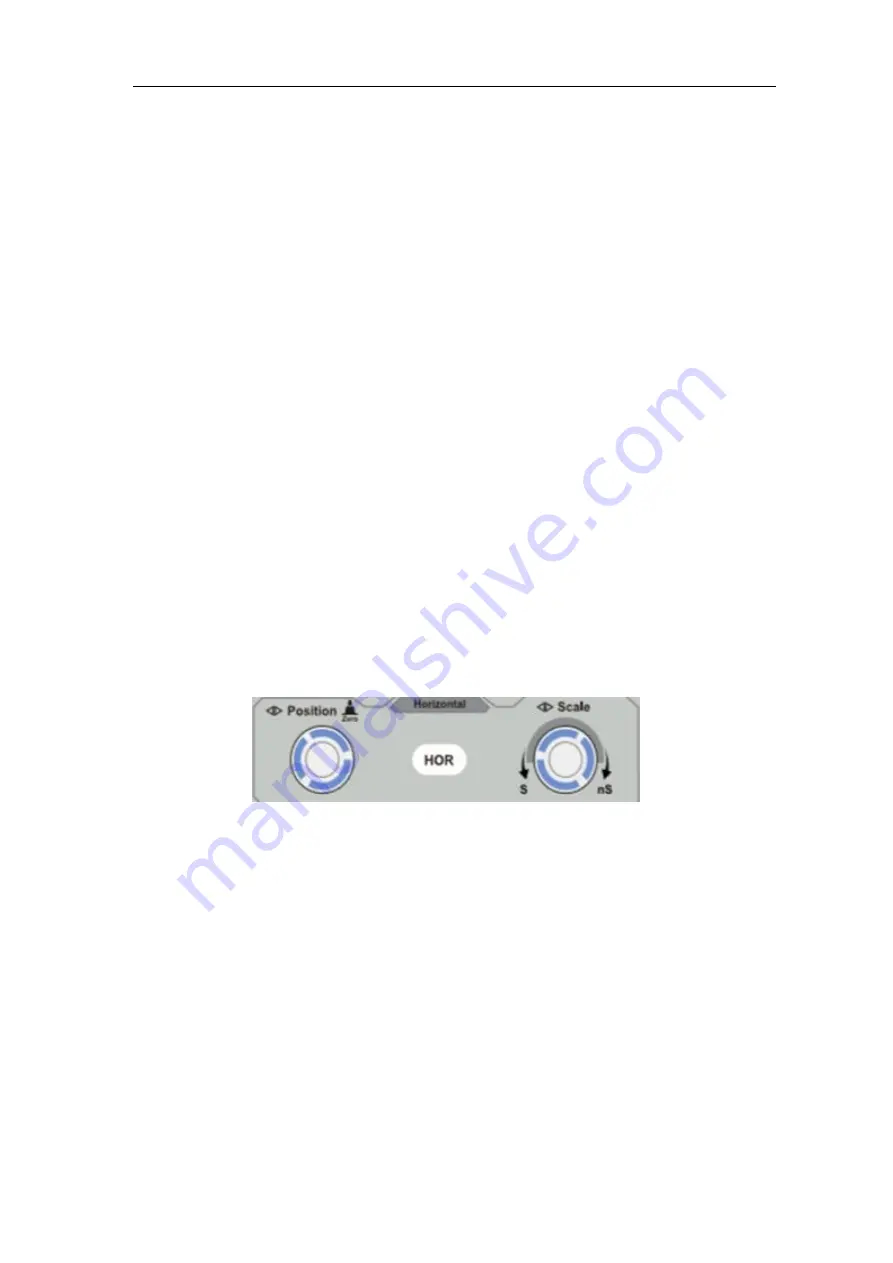
3.Quick Start
14
If the channel is under the AC mode, the DC component would be filtered out.
This mode helps you display the AC component of the signal with a higher
sensitivity.
Vertical offset back to 0 shortcut key
Turn the
Vertical Position
knob to change the vertical display position of the
selected channel, and push the position knob to set the vertical display
position back to 0 as a shortcut key, this is especially helpful when the trace
position is far out of the screen and want it to get back to the screen center
immediately.
3. Change the Vertical Setting and Observe the Consequent State Information
Change.
With the information displayed in the status bar at the bottom of the waveform
window, you can determine any changes in the channel vertical scale factor.
Turn the
Vertical
Scale
knob and change the "Vertical Scale Factor (Voltage
Division)" of the selected channel, it can be found that the scale factor of the
selected channel in the status bar has been changed accordingly.
Introduction to the Horizontal System
Shown as
, there are a button and two knobs in the
Horizontal
Controls
. The following practices will gradually direct you to be familiar with
the setting of horizontal time base.
Figure 3-11 Horizontal Control Zone
1. Turn the
Horizontal Scale
knob to change the horizontal time base setting
and observe the consequent status information change. Turn the
Horizontal Scale
knob to change the horizontal time base, and it can be
found that the
Horizontal Time Base
display in the status bar changes
accordingly.
2. Use the
Horizontal Position
knob to adjust the horizontal position of the
signal in the waveform window. The
Horizontal Position
knob is used to
control the triggering displacement of the signal or for other special
applications. If it is applied to triggering the displacement, it can be
observed that the waveform moves horizontally with the knob when you
rotate the
Horizontal Position
knob.
Triggering displacement back to 0 shortcut key






























